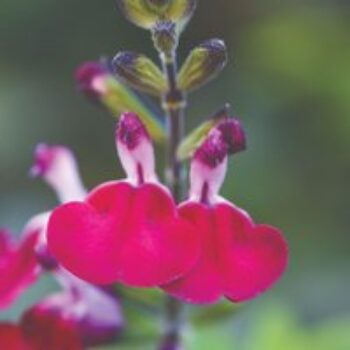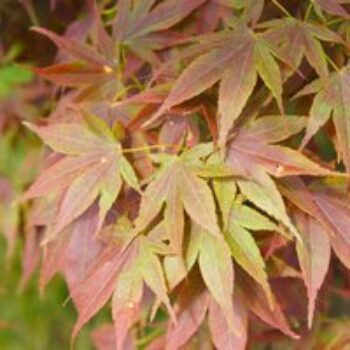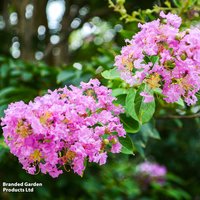- New research shows flies can tolerate temperatures 2.3°C lower than bees before losing motor function, making them particularly vulnerable to climate change and raising concerns about their crucial role as the world’s second most important pollinators.
- The study, conducted across three countries, reveals that flies’ sensitivity to heat is especially concerning for crops like chocolate that depend on fly pollination and for high-altitude ecosystems where flies are the dominant pollinators.
- Insect populations are declining by nearly 1% annually (projected 24% decrease in 30 years), prompting urgent calls for conservation as these creatures are essential for pollination, nutrient cycling, and overall ecosystem function.
- Individuals can help protect pollinators by creating diverse habitats in their yards through native plant gardening, reducing pesticide use, providing nesting sites, and supporting conservation organizations.
Life can’t function without insects. At least, not for long. They pollinate, break down waste, cycle nutrients, and touch every node in the web of life, filling endless niches across the planet.
As global temperatures continue to rise, some of Earth’s most important but overlooked pollinators, the flies, may be at greater risk than previously thought. According to a new study, flies may be more sensitive to climate change than bees. In warming experiments, researchers found bees could tolerate temperatures about 2.3 degrees Celsius higher than flies before losing motor function.
“Even though it sounds small, two Celsius degrees can actually be a pretty significant average temperature that can impact foraging, ecology, behaviors, reproduction and so on,” lead author Margarita López-Uribe of Penn State University told Mongabay.
Flies are the second most abundant category of pollinators after bees, yet they rarely receive the same attention or conservation focus. North America hosts more than 61,000 fly species alone, making them one of the continent’s most diverse insect groups. They can be found pollinating plants from mountain peaks to seashores, though they are especially crucial in colder, high-altitude regions.
“It’s time we gave flies some more recognition for their role as pollinators,” López-Uribe said.

“When we look at pollinator communities along altitude and latitudinal gradients, flies become more dominant pollinators in colder areas of the planet,” López-Uribe said.
Flies’ preference for cooler conditions may help explain their greater sensitivity to heat compared to bees. Bees evolved in arid environments and can generate and have ways to regulate their own body heat, while flies appear to be more strictly dependent on outside temperatures.
This study emerged as a response to COVID-19 lockdowns, with students conducting experiments in their backyards across three locations: a high-altitude site in Colombia and two subtropical sites in Texas and California. Using a water bath setup, researchers tested over 400 insects to determine their critical thermal maximum, the temperature at which they lose motor control.
While the study provides insights, López-Uribe notes some limitations. “The sampling was limited to urban and suburban areas, which implies there may be a bias for species that are already somewhat tolerant to higher temperatures due to urban heat island effects. Even with this bias, flies were still more heat-susceptible than bees.”
This sensitivity becomes particularly concerning, given the pace of global warming. The planet has already warmed by about 1.1°C since pre-industrial times. Scientists warn we could exceed 1.5°C of warming within the next decade – a rate of change that may be too rapid for many species to adapt to. At current trajectories, experts say we could see temperature increases of 2.4-3.5°C by 2100 without more aggressive climate action, which could push many heat-sensitive insects beyond their thermal limits.
These implications could be concerning for crops like cacao, used to make chocolate, which relies heavily on tiny flies called midges for pollination.
“The cacao pollination system is incredibly delicate,” said López-Uribe. “The flowers are very small and the pollen is viable for very few hours during the day. Changes of even a couple of Celsius degrees could actually impact the ability of pollinators to forage and potentially impact pollination of these crops.”

The findings suggest that conservation efforts need to consider flies alongside more celebrated pollinators like bees and butterflies. López-Uribe emphasizes the importance of creating diverse microhabitats within human-modified landscapes that can serve as refuges for heat-sensitive insects.
“Understanding these differences in tolerance and susceptibility to heat may lead to stronger arguments for why we should be designing spaces and landscapes where these diversity microhabitats are thought and planned in design,” she says.
The study comes amid growing global concern about insect declines. Research shows insect populations are declining by about 1% annually, amounting to 24% fewer insects in 30 years and 50% fewer in 75 years if current trends continue.
According to a 2021 meta-analysis, insect populations are suffering from “death by a thousand cuts” or a combination of multiple stressors. Climate change, habitat degradation, and agricultural practices (and use of pesticides) are identified as the three most significant factors driving insect declines globally.

However, there are ways that individuals can help protect both flies and other important pollinators in their own yards and communities. Conservation experts recommend creating pollinator-friendly habitats by planting a variety of native flowering plants that bloom throughout the growing season to provide consistent food sources. Leaving some areas of bare ground and hollow plant stems provides nesting habitat for many species while reducing lawn mowing frequency allows flowering “weeds” like clover and dandelions to provide additional forage.
Simple actions like installing “insect hotels” made from bundled hollow stems or blocks of wood with holes drilled in them and leaving dead wood and leaf litter in place create microhabitats that many insects need for nesting and overwintering.
Equally important is avoiding pesticides, herbicides, and other harmful chemicals that can directly kill beneficial insects or persist in the environment
Finally, supporting conservation organizations working to protect insects through donations or volunteer time helps advance broader efforts to study and conserve these essential creatures.
As biologist Edward O. Wilson once observed, “If human beings were to disappear tomorrow, the world would go on with little change… But if invertebrates were to disappear, I doubt the human species could last more than a few months.”
Banner image of a fly mid-pollination by Stig Nygaard via flickr. (CC BY SA 2.0)
Liz Kimbrough is a staff writer for Mongabay and holds a Ph.D. in Ecology and Evolutionary Biology from Tulane University, where she studied the microbiomes of trees. View more of her reporting here.
Citation: López-Uribe, M. M., Appert, M. K., Delgado, A. X., Herrera-Motta, A. F., Jimenez, A., Martín-Rojas, R. D., … & Gonzalez, V. H. (2024). Critical thermal maxima differ between groups of insect pollinators and their foraging times: Implications for their responses to climate change. Journal of Melittology, (122).
FEEDBACK: Use this form to send a message directly to the author of this post. If you want to post a public comment, you can do that at the bottom of the page.








